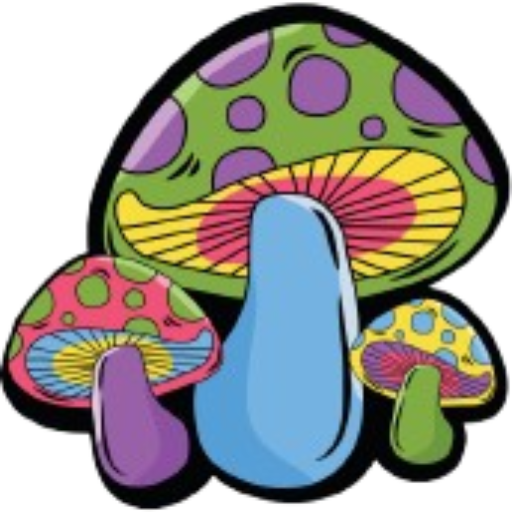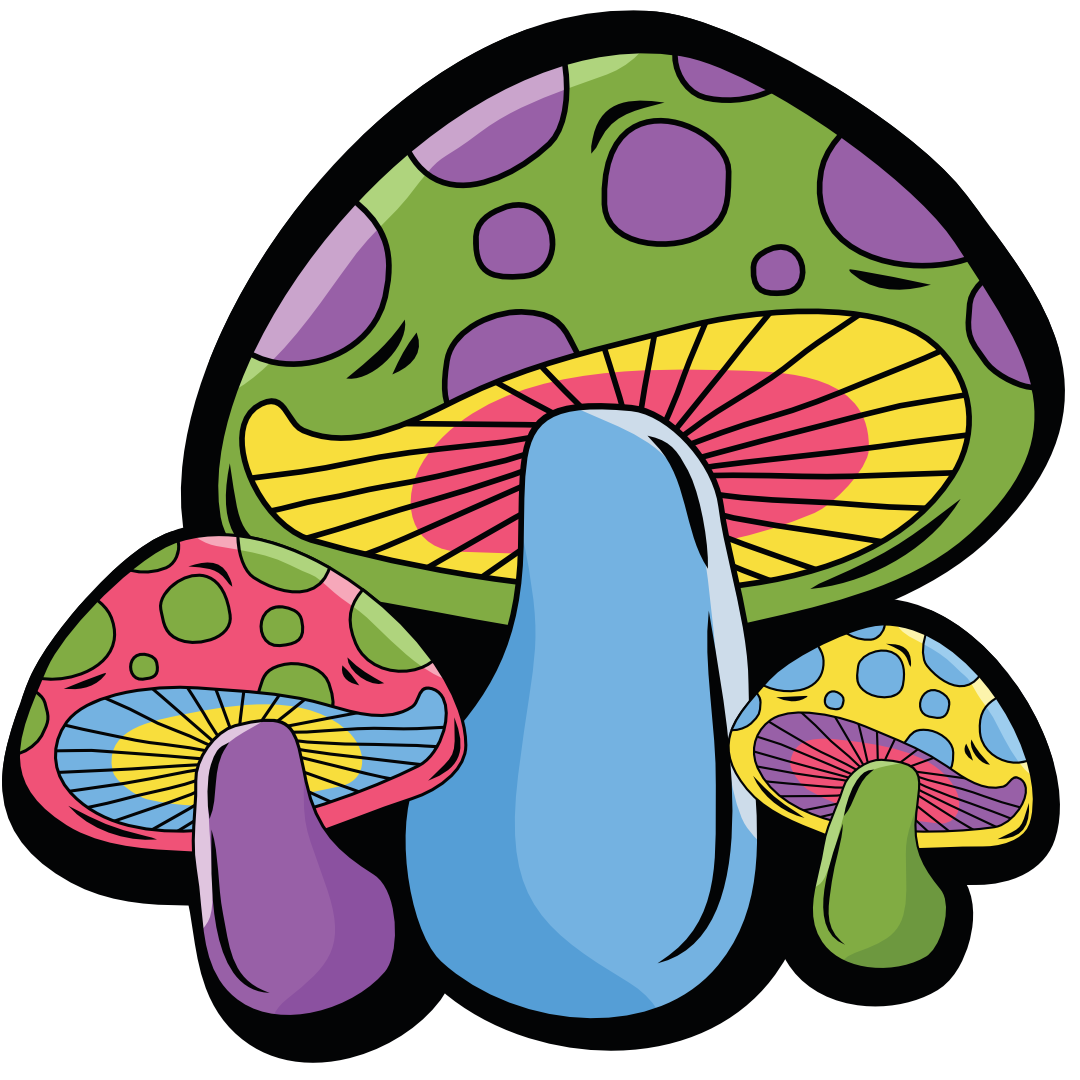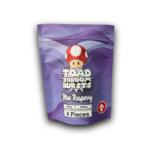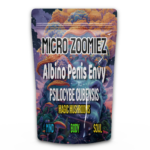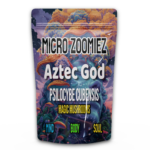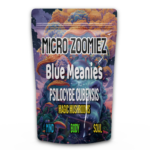Psilocybin mushrooms, also known as “magic mushrooms,” are a type of fungi that have caught the attention of many. They have over 200 species1. These mushrooms have compounds like psilocybin and psilocin that can change how we think and feel. As we learn more about psilocybin’s healing potential, it’s key to know the facts about these mushrooms.
In Canada, having, selling, or making psilocybin mushrooms is illegal. But, Health Canada has made ways for people to use psilocybin for health reasons. This includes clinical trials, the Special Access Program, and special exemptions1.
Psilocybin mushrooms start to work in 15-45 minutes and can last for four to six hours1. You can eat them raw or cooked, make tea, put them in capsules, or snort the powder (but this isn’t advised)1. They can make you see things differently, change your mood, and make you feel more awake. But, they can also cause bad feelings like anxiety, confusion, and fear1. You might also feel your heart beating faster, feel weak, sweat, or get cold1.
As we learn more about psilocybin, it’s important to talk to doctors and understand the risks and benefits. This article will look into the history, effects, and legal status of psilocybin mushrooms. We’ll also see how they might help in psychedelic-assisted therapy.
What Are Psilocybin Mushrooms?
Psilocybin mushrooms, also known as “magic mushrooms,” are a type of fungi. They contain psilocybin and psilocin, which are psychoactive compounds2. For centuries, indigenous cultures have used them for religious, spiritual, and medicinal reasons3. Today, scientists are studying them for their potential to help with mental health issues.
History and Origins
These mushrooms belong to the Psilocybe genus, with over 116 species2. They grow on every continent except Antarctica, mainly in subtropical humid forests, especially in Mexico23. Indigenous people have used them for healing and spiritual practices for a long time3.
In the 1950s and 1970s, researchers like Timothy Leary and Richard Alpert studied their effects3. Since the early 2000s, there’s been more interest in their possible health benefits. This includes treating anxiety, depression, addiction, and PTSD3.
Legality and Regulations
In Canada, psilocybin and psilocin are illegal drugs under the Controlled Drugs and Substances Act (CDSA)2. You can’t sell, possess, or make them without Health Canada’s permission2. They’re also under the Food and Drugs Act (FDA), which controls their use2.
The laws about psilocybin mushrooms vary around the world. Some places have made them legal for certain uses, while others still ban them3. It’s important to know the laws in your area before handling psilocybin mushrooms.
2Psilocybin mushrooms are found in many genera, including Psilocybe, Gymnopilus, Panaeolus, and more2. They’re most common in Mexico, followed by Canada and the US, Europe, Asia, Africa, and Australia2. Psilocybe cubensis is popular in tropical areas2. Psilocybe semilanceata is found in many parts of the world and is the most widespread2. Psilocybin mushrooms grow in many places, especially in humid forests3. Indigenous cultures have used them for healing and spiritual rituals for a long time3. In the 1950s to the 1970s, researchers like Timothy Leary and Richard Alpert studied their effects3. Psilocybin and psilocin work by affecting serotonin receptors in the brain, causing changes that can last several hours2. These mushrooms don’t lead to long-term addiction because they increase tolerance only briefly2. The effects can last from three to eight hours, with the strongest feelings in the first few hours after taking them.
Active Ingredients and Effects
Understanding Psilocybin and Psilocin
Psilocybin and psilocin are the main psychoactive compounds in magic mushrooms4. Over 100 mushroom species have psilocybin, the key ingredient for hallucinations4. In 1957, psilocybin was first isolated, and a synthetic version came a year later4. In the body, psilocybin turns into psilocin, which affects serotonin in the brain, changing how we see things4.
Since 1970, the U.S. Drug Enforcement Administration has listed psilocybin as a Schedule I substance4. Yet, the FDA sees psilocybin as a “breakthrough therapy” for treating hard-to-manage anxiety and depression4. Psilocybin changes mood, thought, and perception by acting like brain neurotransmitters4. It works by activating a specific serotonin receptor in the brain, causing its psychedelic effects4.
Recreational use of psilocybin is still illegal in the U.S4. But, Australia made history in February 2023 by legalizing psilocybin for medical use4. You can take psilocybin in tea, raw mushrooms, capsules, or even chocolate4. Studies show it could help with smoking cessation, depression, cancer anxiety, and treatment-resistant depression4. When paired with counseling, psilocybin therapy can lead to deep insights, mental flexibility, and lasting behavior changes4.
But, psilocybin can also have negative effects like bad trips, anxiety, fear, confusion, and physical issues like high blood pressure and nausea4. There’s a risk of mistakenly eating poisonous mushrooms, which can be dangerous4.
| Psilocybin | Psilocin |
|---|---|
The effects of psilocybin and psilocin can be deep and unpredictable6. The European Monitoring Centre for Drugs and Drug Addiction (EMCDDA) says the effects start within 30 minutes and last 4–6 hours6. Sometimes, the changes in perception and thought can last for days6. The EMCDDA also notes that dried mushrooms have about 10 times more psilocybin than fresh ones6.
Psilocybin can make you feel euphoric, peaceful, and spiritually awakened, changing how you see time and space6. But, it can also cause negative effects like paranoia, confusion, dizziness, nausea, and poor coordination6. Some people might experience extreme anxiety, short-term psychosis, and psychological distress, known as a “bad trip.”6
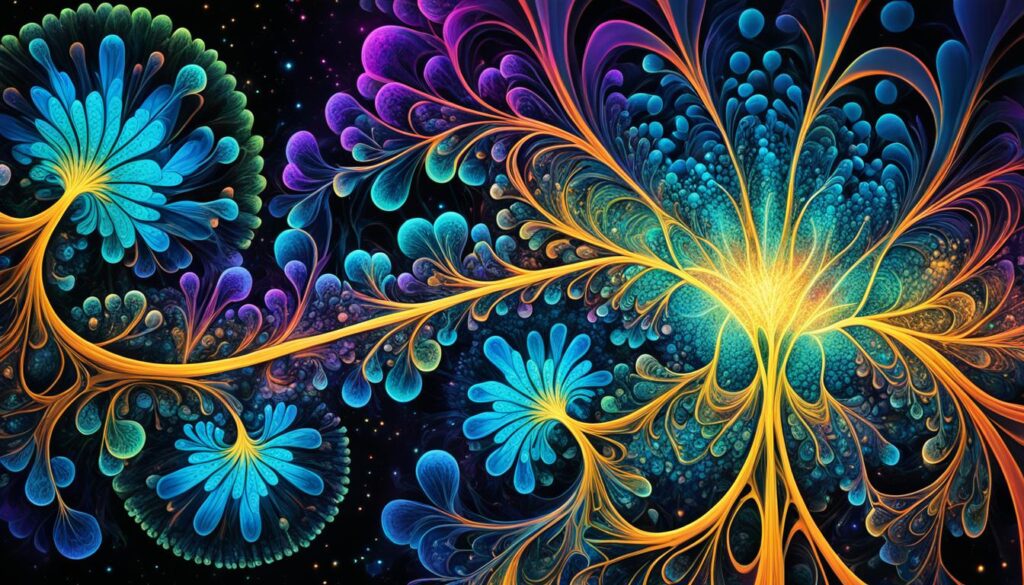
Psilocybin and psilocin can be made in a lab or found naturally in some mushrooms5. Over 50 species of these mushrooms belong to the Psilocybe, Panaeolus, and Copelandia genera5. People usually take 1–5 grams of dried mushrooms for a trip5. The effects start within 30 minutes and last about 4–6 hours5.
Psilocin mainly affects serotonin receptors 5-HT1A, 5-HT2A, and 5-HT2C5. Its effects can include relaxation, feeling happy, seeing things more vividly, and even delusions5. Unlike LSD, psilocin doesn’t affect dopamine receptors5. Its strength as a hallucinogen is linked to its interaction with serotonin 5-HT2 receptors5.
“Psilocybin can induce changes in mood, thought, and perception by mimicking neurotransmitters in the brain.”
Consumption and Dosage
There are many ways to take psilocybin mushrooms. You can eat them raw, cook them, or make tea with them7. Some people take them in capsules or sniff them as powder7.
The strength and effects of psilocybin mushrooms change a lot. This depends on the mushroom type, how much you take, and your body and mind7.
Microdosing, taking small amounts of psilocybin, is popular now. It might help with mood, focus, and creativity8. People usually take 0.1g to 0.5g of dried mushrooms for this8.
Bigger doses of psilocybin can make you feel more, but it can also be risky7. Some people have had bad reactions, like feeling too happy, seeing things that aren’t there, or having kidney problems7.
Studies show psilocybin can help with depression, anxiety, and addiction9. It has been shown to make people feel better and think clearer9.
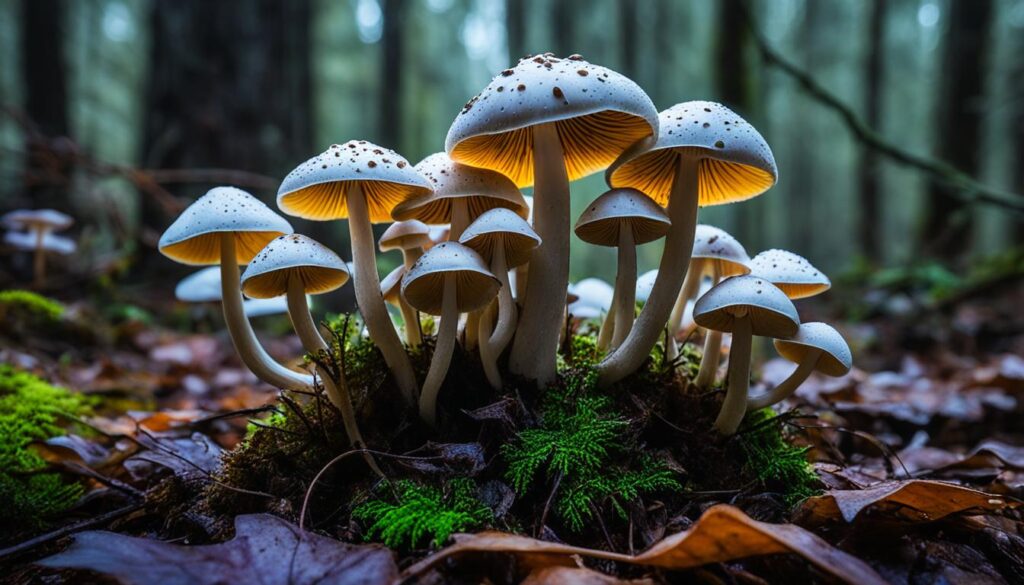
Be careful when taking psilocybin mushrooms. Make sure you know what you’re doing and talk to experts if you can789.
| Psilocybin Mushroom Dosage | Effects |
|---|---|
| Microdose (0.1g – 0.5g) | Improved mood, focus, and creativity |
| Low Dose (0.5g – 2g) | Mild psychedelic effects, introspection |
| Moderate Dose (2g – 5g) | Pronounced psychedelic effects, altered perception |
| High Dose (5g+) | Intense psychedelic experience, risk of adverse effects |
Remember, psilocybin mushrooms can affect people differently. Always be careful and get advice from experts for a good experience789.
Short-Term Effects of Psilocybin Mushrooms
Mental and Psychological Effects
Psilocybin mushrooms, also known as magic mushrooms, can change your mind and feelings. They make emotions and senses stronger and can cause vivid hallucinations. You might feel like reality is different10. These feelings can also make you anxious, panicked, or paranoid10.
But, some people feel clearer mentally and emotionally. They might be more creative and feel a strong connection to the world around them10.
Physical Effects
Psilocybin mushrooms can also affect your body. You might feel numb, have a fast heart rate, or get dry mouth. Other effects include nausea, muscle weakness, and sweating10. These physical reactions are linked to how your mind and body work together11.
The effects of psilocybin mushrooms start within 20 to 90 minutes after you take them. They can last up to 12 hours11. How strong and long these effects are can depend on many things, like your body, how much you took, and the mushroom’s psilocybin level12.
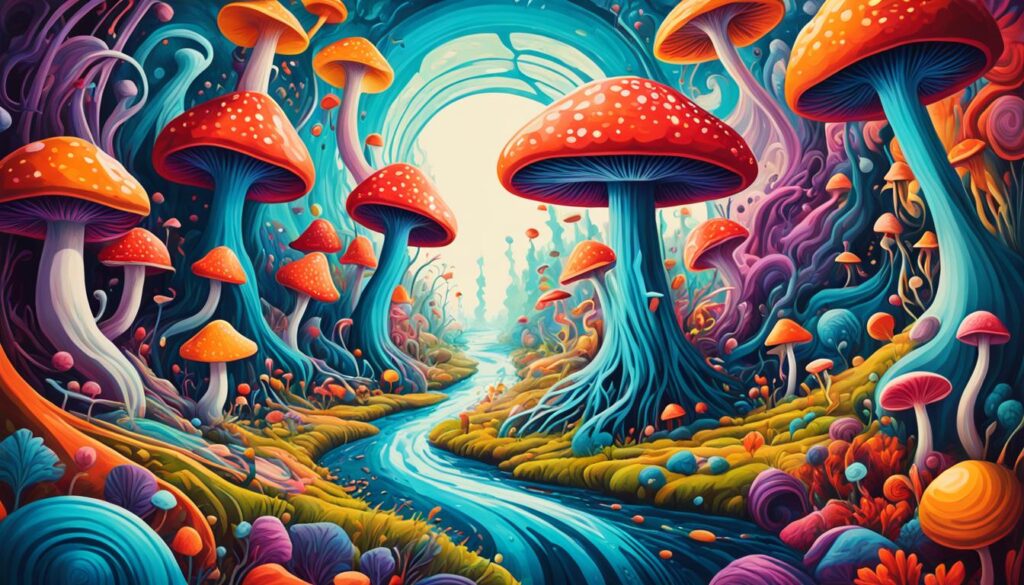
Using psilocybin mushrooms can be risky. It can make you act without thinking, cause panic, or even be poisonous. Taking them too often can lead to serious mental health problems1011.
“Psilocybin is found in more than 100 species of mushrooms, and magic mushrooms can produce profoundly unpleasant experiences at high doses.”10
If you have mental health issues, like schizophrenia or bipolar disorder, psilocybin mushrooms could be dangerous for you12. Always be careful and talk to a doctor before trying them.
Long-Term Effects and Risks
Psilocybin mushrooms have well-known short-term effects, but their long-term use is still being studied and debated13. They are considered one of the safest drugs out there13. Even though high doses can be harmful, deaths from psilocybin mushrooms are very rare13.
However, using psilocybin mushrooms over a long time might have risks13. It could change the brain chemistry, affecting mood and thinking13. A known issue is Hallucinogen Persisting Perception Disorder (HPPD), which can last for weeks or months13. Flashbacks can also happen, but they’re not common13.
Psilocybin mushrooms can cause long-term problems, especially if you had mental health issues before using them13. They can affect your mood, personality, and might lead to addiction13. Long-term use might increase anxiety, depression, and even make you act strangely13. They’re not physically addictive like some other drugs, but you can still feel dependent on the feeling they give you13.
Using shrooms can lead to intense feelings, altered senses, and strange experiences13. These feelings can be very strong, helping you deal with emotions but sometimes causing harm13. They can also make you feel physically different, which might make you more likely to have accidents13.
Also, shrooms can affect your judgment and coordination, increasing the risk of injuries14. Rarely, they can cause long-term psychosis and flashbacks14. These flashbacks can be mild or very intense, lasting a few minutes or more14.
Psilocybin mushrooms are a Schedule I drug in the US, meaning they’re seen as highly addictive with no medical use15. Long-term use can lead to flashbacks, mood changes, and addiction15. Even years after stopping, flashbacks can still happen15. The long-term effects of mushrooms are still not fully understood15.
In conclusion, the long-term effects of psilocybin mushrooms are not well-known, but the risks are real131415. It’s important to seek help if you’re concerned about the effects of using these substances15.
“The exact long-term effects of mushrooms are unpredictable and largely unknown.”
Potential Therapeutic Uses
Psilocybin mushrooms are still illegal in most places, but research is looking into their benefits for mental health16. Studies focus 25 times more on their healing uses than other aspects, showing a big interest in this area16.
Studies show psilocybin can help with anxiety, depression, and other mental health issues17. Over 200 types of fungi make psilocybin naturally, and over 130 trials are happening or will start soon17.
Current Research and Clinical Trials
A study found a single 25 mg dose of psilocybin helped with depression more than a 1 mg dose after 3 weeks17. Psilocybin also helped with depression after just two doses18.
It looks promising for quitting smoking and treating anorexia nervosa too18. Johns Hopkins got a big grant in 2021 to study psilocybin for quitting smoking, the first in 50 years in the U.S18.
Psilocybin with talk therapy can help with depression for up to a year18. It also makes the brain more flexible, leading to positive changes in mood and behavior18.
Psilocybin’s benefits are promising, but it’s safer in controlled studies with support from experts18.
Research on psilocybin therapy is growing, showing it could help with many mental health issues16. But, it faces challenges due to its illegal use and getting FDA approval17.
Despite challenges, the evidence for psilocybin’s benefits is strong, and we’ll likely see more progress16. It’s important to balance its benefits with safety measures for those trying it181617.
Microdosing Psilocybin Mushrooms
Microdosing involves taking small amounts of psilocybin regularly. This method is popular for improving mood and brain function19. Shannon Chiarenza only microdoses a few times a year for her mental health19. Amanda Siebert notes that many people, including parents and professionals, are now seeking psilocybin19.
Some studies show it can help with cluster headaches, but experts warn against using it without a doctor’s guidance20. Researchers looked at 953 psilocybin users and 180 non-users20. Over 50% of users took psilocybin with other supplements20. Users take 0.1 to 0.3g of mushrooms 3-5 times a week20.
Microdosing means taking less than 300 milligrams of psilocybin19. More dispensaries now offer psilocybin, especially in Vancouver and Toronto19. Paul Lewin sees a rise in psilocybin use and cases related to it in Canada19. Despite its use, psilocybin is still illegal in Canada for any amount19.
Psilocybin use has grown a lot in Canada, says Paul Lewin19. Dr. Dominique Morisano thinks the effects of microdosing might be just a placebo19. While microdosing is still being studied, bigger doses could help with depression and addiction19.
Psilocybin mushrooms are more popular than LSD, with a big increase in searches on microdosing since 201521. About 3% of Americans, or 8 million adults, tried psilocybin mushrooms last year21. Half of those who tried it used it for microdosing, taking a small dose21.
Psilocybin is now widely used, especially more than other drugs like ecstasy and ketamine21. People use it for fun, mental health, and personal growth21. Microdosing is different from the big doses used in studies, but it might help with mood and thinking21.
“People are turning to microdosing in search of solutions to their struggles, with stressors like the pandemic and economic challenges potentially driving the interest in psilocybin for therapeutic purposes.”19
The market for psychedelics is growing, similar to cannabis, with a focus on infrequent users21. Psilocybin mushrooms are getting more popular, shown by more drug busts related to them21.
Legality and Decriminalization Efforts
The legal status of psilocybin, found in magic mushrooms, changes by region. In Canada, it’s illegal to make, sell, or have magic mushrooms without Health Canada’s okay22. But, some places in North America have made having psilocybin mushrooms less of a crime. Oregon has even made it legal for therapy22.
In November 2020, Oregon made psilocybin therapy legal and lessened drug possession penalties22. Measure 110 changed personal drug possession to a minor offense with a $100 fine22. Then, in January 2023, Oregon passed SB 303 to track data from psilocybin centers22.
Colorado also made having mushrooms a low police priority in 2019 with Initiative 30122. Denver made having small amounts of drugs a minor crime in March 2020 with HB19-126322. On November 8, 2022, Colorado voted for Proposition 122, which will allow regulated access to psychedelics22. This law will include more substances like dimethyltryptamine and mescaline by June 1, 202622.
The Colorado Department of Regulatory Agencies must set rules for natural medicine workers by January 1, 202422. They will start taking license applications soon after. By September 30, 2024, they will set up the rules for the natural medicine program22.
Psilocybin’s legal status is still changing and complex. But, efforts to decriminalize and legalize it in some places show a new view on psychedelics22. As research grows, we can expect more changes in the law22.
Conclusion
Psilocybin mushrooms, also known as “magic mushrooms,” are fascinating and need careful thought. They are still illegal in Canada, but research shows they could help with mental health issues like depression, anxiety, and addiction2324.
Research shows psilocybin therapy can really help with depression and anxiety. It’s even as effective as some antidepressants23. It also looks promising for treating nicotine and alcohol addiction2524.
But, using psilocybin mushrooms comes with risks. It’s important to get the right dose and follow guidance from experts to avoid harm24. As we learn more, we see the need for a careful and thoughtful approach to use these substances24.
FAQ
What are psilocybin mushrooms?
What are the active ingredients in psilocybin mushrooms?
How are psilocybin mushrooms consumed?
What are the short-term effects of using psilocybin mushrooms?
What are the potential long-term effects and risks of using psilocybin mushrooms?
Are there any approved therapeutic uses for psilocybin in Canada?
What is microdosing psilocybin mushrooms?
What is the legal status of psilocybin mushrooms in Canada?
Source Links
- Psilocybin and psilocin (Magic mushrooms)
- Psilocybin mushroom
- Psilocybin mushroom | Description, Species, Uses, Hallucinogen, & Facts
- Psilocybin: Facts about the main ingredient in psychedelic ‘magic’ mushrooms
- Hallucinogenic mushrooms drug profile | www.euda.europa.eu
- Psilocybin and magic mushrooms
- PSILOCYBIN: Overview, Uses, Side Effects, Precautions, Interactions, Dosing and Reviews
- Microdosing with psilocybin mushrooms: a double-blind placebo-controlled study – Translational Psychiatry
- Therapeutic use of psilocybin: Practical considerations for dosing and administration
- Effects of Psilocybin Mushrooms | Hallucinogenic Shrooms
- The Short and Long-Term Effects of Hallucinogens
- What are the Short and Long-Term Effects of Shrooms?
- Long-Term Effects of Shrooms | Psilocybin Side-Effects
- What Are the Long-Term Effects of Using Psychedelic Mushrooms?
- The Long-Term Effects of Shrooms
- Potential Therapeutic Effects of Psilocybin
- Psilocybin and Mental Health: The Magic in the Mushrooms | ASM.org
- “Magic Mushrooms,” Psilocybin and Mental Health
- Some Canadians are microdosing magic mushrooms for their mental health, but research on benefits is slim | CBC Radio
- Psilocybin microdosers demonstrate greater observed improvements in mood and mental health at one month relative to non-microdosing controls – Scientific Reports
- Microdosing and tripping on mushrooms is on the rise in U.S.
- Psychedelics Legalization & Decriminalization Tracker – Psychedelic Alpha
- Analysis of Psilocybin-Assisted Therapy in Medicine: A Narrative Review
- May 15 2023 9:00AM
- Psilocybin – an overview | ScienceDirect Topics
